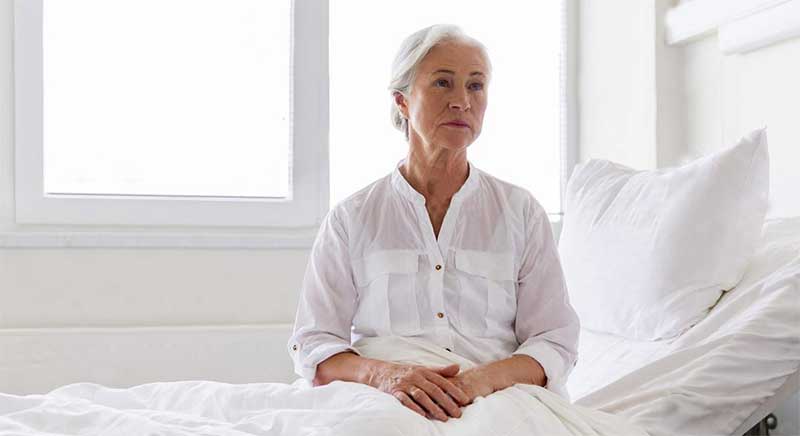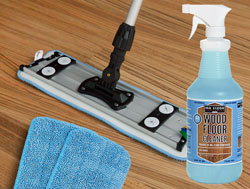
So what does Mr. Floor know about disinfecting a home or caring for a loved one who has contracted the virus? Like you, we’ve done research on the CDC, state and local health websites to try and learn as much as we can. Coupled with our years of experience in manufacturing cleaners for the home, we have formed some opinions and suggestions that we’re happy to share with you. Of course, we urge you to make your own decisions, do your own research and understand that what we’re offering is our opinion, for what that’s worth.
With the caveats made, we’re publishing a two-part blog post detailing how we might care for a loved one who has contracted COVID-19. It is a “How-To” guide on preparing and managing a COVID-19 positive home.
1: Have a Plan
Until there is a vaccine for COVID-19, which is probably more than a year away as of this writing, it’s quite possible that someone in your household will become ill with the virus. When that happens, having a plan to minimize the risk that others in the household will face is important. This is especially true if you’ve got a multi-generational household or a loved one with pre-existing medical conditions.
Designing a plan is free, but the execution of that plan requires forethought and the purchase of a few essential supplies.
2: Protect Those Who Are Healthy, Including You
There’s only one thing worse than having one person sick with COVID-19 in a household, and that’s having two people sick in the same house. When someone is ill in your home, and you’re the caretaker, the first thing you must do is to minimize the probability that you and others in your family will become infected.
Because COVID-19 is an airborne virus that experts believe travels primarily via exhaled droplets from the infected person’s nose and mouth, it’s important that you equip yourself with the civilian version of Personal Protective Equipment.
Civilian Version of Personal Protective Equipment
If I gave you 60 seconds to come up with a list of PPE (Personal Protection Equipment) that every prepared home should have, you’d likely shout out gloves and masks. Good for you! These are two crucial components of personal care that should be in your COVID-19 inventory at home today.
So, what types of gloves and masks you ask?
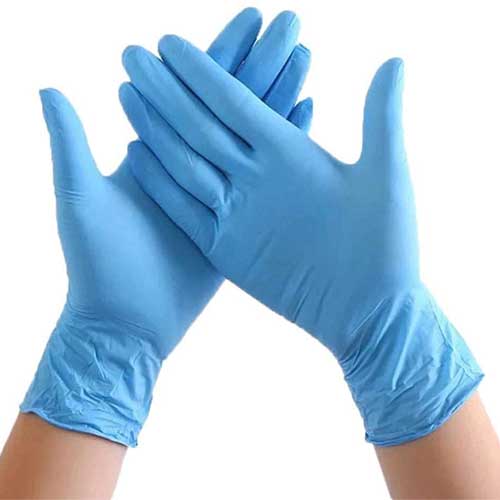
In less frantic times, single-use Nitrile gloves would be the go-to protection for your hands. The cost prior to the pandemic was about $16 for 200 pairs on Amazon. Today they’re tough to come by at double or triple that price. If you don’t already have a box of 200 pairs of gloves, we suggest you cough up the $30 and buy them. They’re your first line of defense both inside and outside the home.
You should also purchase some dishwashing gloves that can be used multiple times and that are tough enough for routine cleaning and disinfecting. Like nitrile gloves, these can be difficult to find so expect to pay $2 to $3 a pair for dishwashing gloves. We recommend having at least 6 pair on hand at all times.
With respect to masks, it’s virtually impossible to purchase N95’s, the type that are rated to filter our 95% of contaminants including viruses. Slightly less effective than N95’s are disposable paper surgical masks that, when they can be had, filter out between 40% to 55% of the water droplets that serve as transport for the virus. I’m disappointed to mention that the vast majority of paper masks are made in China, so if you come across any made in the USA, let us know so that we can support local US businesses.
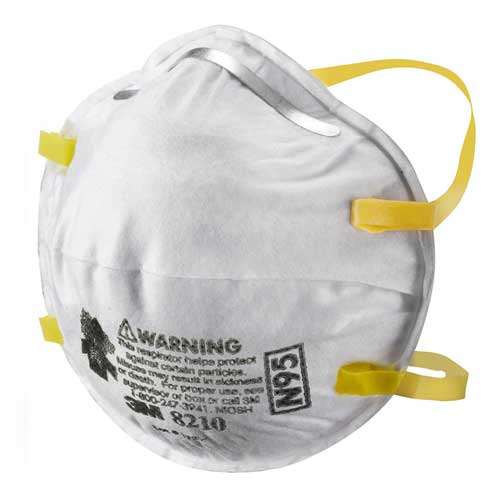
Finally, if you’ve got a sewing machine, you can make washable cotton masks that are at least as effective as paper masks and, depending on the material and fit, can be substantially better. There are several easy-to-follow instructions on YouTube, and a couple of our favorites include the Kaiser-Permanente mask and the slightly more complicated Olson Mask.
The bottom line is that when you care for or share time with the loved one who is infected, you should at a minimum be wearing gloves and a mask.
Additional Civilian PPE That is Good to Use
In addition to masks and gloves, we also recommend wearing protective washable or disposable clothing into the room of the loved one. Remember, one of the frequent symptoms of COVID-19 is coughing, and if you’re providing comfort to an ill family member it’s inevitable that you’ll come in physical contact with droplets from coughs or sneezes.
At the lowest end of the scale PPE clothing might mean wearing a t-shirt into the room and then upon leaving, removing the shirt and securing it in a plastic bag for later laundering.
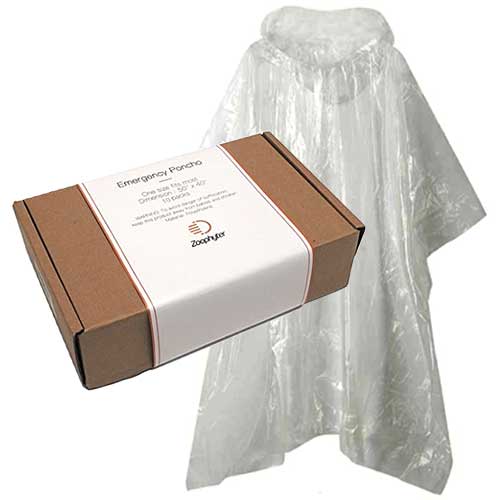
An even better solution is to wear a disposable poncho when you’re spending an extended amount of time with the infected person. Like any raincoat, a disposable poncho is water repellent and will allow you to come into physical contact with the person and their coughs, knowing that once you leave the room you can carefully doff the disposable poncho without fear of cross contamination from exposed clothing. In a pinch a lawn-sized garbage bag might also work, but it would be, of course, sleeveless, reducing the safety and effectiveness.
Because COVID-19 virus can survive on a floor, it’s also good idea to have a pair of washable slippers outside of the door of your care room. Before you enter the care room you can put on the washable slippers. When you exit you can take the slippers off, washing them at the end of the day, or hitting them with Lysol or some other disinfecting spray.
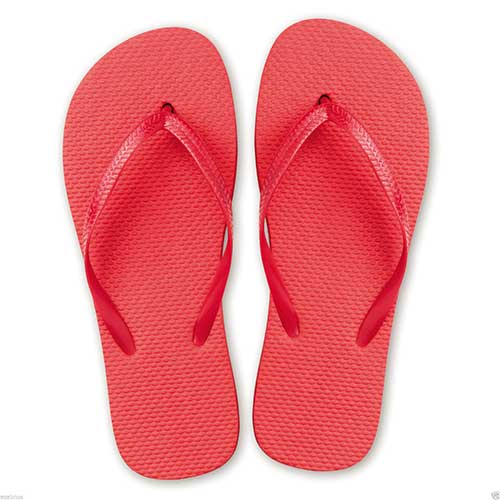
3: Reduce Viral Transfer Outside of Your Loved One’s Room
No matter how careful you are with PPE and keeping the virus contained in the room where your loved one is recuperating, you need to clean and disinfect your home on a regular schedule. This means cleaning and disinfecting the bathroom adjacent to your loved one, and of course the flooring in the bathroom and adjoining spaces.
You can find general instructions for cleaning floors and countertops in our recent blog post, but we also wanted to offer some additional suggestions for when you’re actively caring for someone with COVID-19.
First, because someone ill with COVID-19 is likely shedding virus cells, and they’re likely being transferred throughout the home by casual contact, it’s critical that you step up your cleaning and disinfecting regimen. As the CDC recommends, it is very important to clean BEFORE you disinfect. Mr. Floor products are custom-engineered cleaning solutions that use advanced, proprietary surfactants to lift dirt from a floor, countertop or other hard surface. Once the hardwood, tile or natural stone floor is clean, you can then apply a disinfectant it to eliminate any virus remaining on the surface after cleaning.
Here are detailed instructions to help you clean your wood floor prior to disinfection using Mr. Floor Wood Floor Cleaner.
Disinfecting a Hardwood Floor After Cleaning It
When someone you love is sick at home, the emphasis is on taking care of them, protecting yourself, and minimizing the risk that the virus will spread to others. This suggests that while the need to keep a wood floor clean is greater than ever, it’s far less important that the floor is “shiny” or “looks like new.”
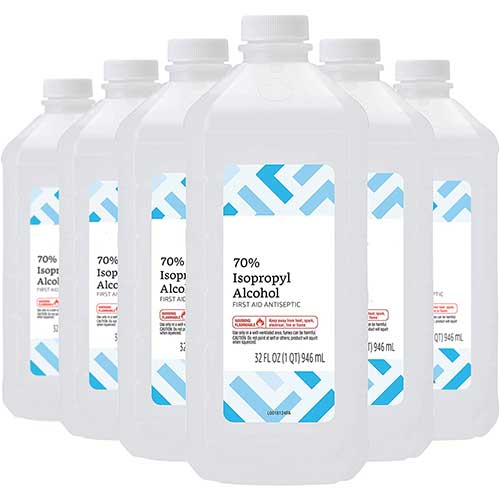
Here’s the truth. The steps you will need to take to disinfect your wood floor may cause some minor damage to the finish of the floor. The most widely available disinfectants – bleach and isopropyl or ethanol alcohol solutions – can cause a water-based polyurethane finish to become cloudy or hazy. Both bleach and alcohol are aggressive disinfectants and in the case of alcohol, it’s also a solvent.
While in some ways a dilute bleach spray might be preferable, (it’s not a solvent) the overspray of bleach onto any fabric or dyed surface will likely cause spotting. That includes curtains, chairs, drapery, clothing, etc. This type of damage from bleach is irreversible. Bleach, can also cause a polyurethane finish to become cloudy, though it is not as aggressive in that respect as a 60% or 70% solution of alcohol.
Bleach has other downsides including it being an irritant to skin, mucous membranes and airways. A bleach solution in the CDC recommended proportions of 4 teaspoons of bleach to a quart of water can be tolerated by most, however, without ill effect.
Using an alcohol-based disinfectant, like Lysol Disinfectant Spray, won’t stain clothing or other fabric, but it can cause a weak water-based polyurethane finish to go cloudy with repeated use.
Fortunately, by carefully controlling the amount of bleach or alcohol disinfectant solution used, you will minimize the chances of making a water-based polyurethane finish cloudy, even with repeated use. If the finish does take on a haze, it’s quite possible to refresh the finish with a screen buffing and re-coating, once Mr. Floor is allowed back into your home. Substantially less expensive than a complete sanding to bare wood and then refinishing the entire floor, a screen buffing and re-coating can be an excellent solution to a slight haze brought on by aggressive chemicals like bleach or alcohol.
The Next Installment: Cleaning a Bathroom For a Love One with COVID-19
Igor Murokh
Igor is a graduate of the University of Illinois and holds a B.A. in Economics. He has worked in the flooring industry for over 30 years and is the VP and Sales Manager of Mr. Floor Companies in Skokie, IL. Igor is a certified wood flooring inspector (CWFI) and routinely helps clients assess flooring issues.

